Points Based Rewards System: A Complete Guide for HRs

A Global Employee Recognition and Wellness Platform
Picture this: Sarah from accounting just closed a complex project three days early. Instead of her effort disappearing into the void, she gets immediate employee recognition.
How? Through your company's points system.
She's not just another employee—she's someone whose contribution actually matters.
That's the power of points-based rewards. No more waiting for annual reviews or hoping someone notices your team's hard work.
Why this matters now
Your people are craving recognition. Employees who received meaningful recognition were 45% less likely to leave within two years.
The reality check? Recognition still occurs behind closed doors.
Maybe it does not happen at all.
Points-based systems change this game entirely. They make recognition visible, immediate, and fair. Everyone knows where they stand and what their efforts mean.
The cost of getting it wrong is steep
Employees who feel undervalued don't just quietly disengage—they leave. Gallup research shows they're twice as likely to quit within 12 months. That's not just an HR statistic; it's your top performer walking out the door.
Your complete implementation roadmap
This guide gives you everything needed to build a points-based reward system that your team will actually use and love. From program design to measuring real business impact, we're covering the practical steps that turn recognition from an afterthought into a competitive advantage.
What Is A Points Based Rewards System?
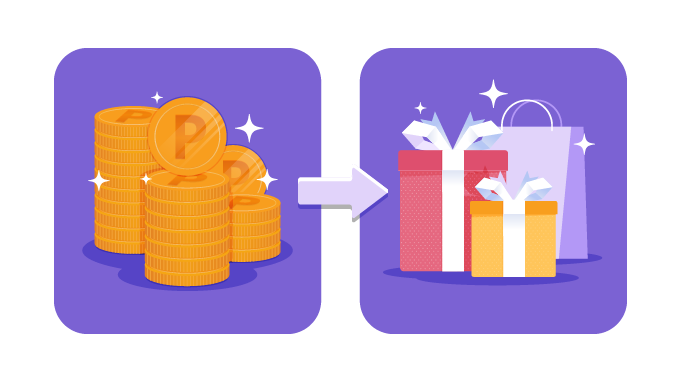
A points-based rewards system is a structured recognition program where employees earn digital points for specific behaviors, achievements, or contributions.
These points can be redeemed for tangible rewards like gift cards, extra time off, or workplace perks.
Here's how it works in action.
Sarah from marketing stays late to help finish a client presentation. She earns points.
Dev from IT patiently walks everyone through that tricky new software update. Points for him too.
Someone consistently shows up and crushes their daily goals? More points.
These aren't just digital gold stars. Points accumulate in each employee's personal account, and they can redeem them for rewards they actually want.
Real rewards people care about:
-
Amazon gift cards
-
Extra PTO days
-
Those noise-canceling headphones everyone's been eyeing
-
Team lunch vouchers
-
Professional development courses
Why this beats traditional recognition.
The old system relied on managers remembering to give praise months later during reviews. By then, nobody recalls what happened anyway.
Points-based systems flip this script entirely. Recognition happens immediately when behaviors occur.
Everyone plays by the same transparent rules, so the quiet high performers get noticed alongside the naturally vocal team members.
The peer-to-peer advantage.
Many platforms let colleagues recognize each other directly.
Appreciation flows from all directions—not just top-down from management.
When your teammate can instantly reward your help on a project, recognition becomes part of your daily culture.
Bottom line: It transforms "maybe the boss will notice" into "your effort definitely counts."
Recommended Resource: Empower the Workforce With A Culture of Peer-to-Peer Recognition

Examples of Points-based Employee Recognition and Rewards
Here are some creative ways companies are implementing points-based rewards. These examples show different approaches you can adapt for your own organization.
1. Points for Completing Milestones

Jake from engineering wraps up that complex database migration. Instead of moving on to the next crisis, he gets 200 points and immediate recognition for hitting his deadline.
Points scale with complexity: 50 for training sessions, 200 for project milestones, 500 for quarterly targets. Some companies add bonus multipliers for early completion.
Why it works: Transforms routine completions into celebrated victories. Employees develop stronger finish-line habits.
Business impact: Direct improvement in project completion rates and deadline adherence.
2. Points for Mastering New Skills
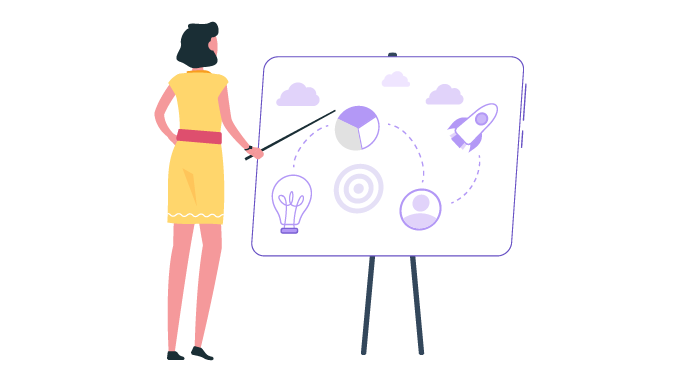
Maria from HR spends her weekend learning new payroll software. She earns 300 points for mastering something that benefits the entire team.
Structure varies by complexity: 100 points for online courses, 300 for certifications, 500 for advanced technical skills.
Why it works: Learning becomes opportunity instead of burden. Career growth feels supported and rewarded.
Business impact: Builds skilled workforce internally without external training costs. Reduces turnover through clear advancement paths.
3. Eco-Friendly Actions: Rewarding Sustainable Choices
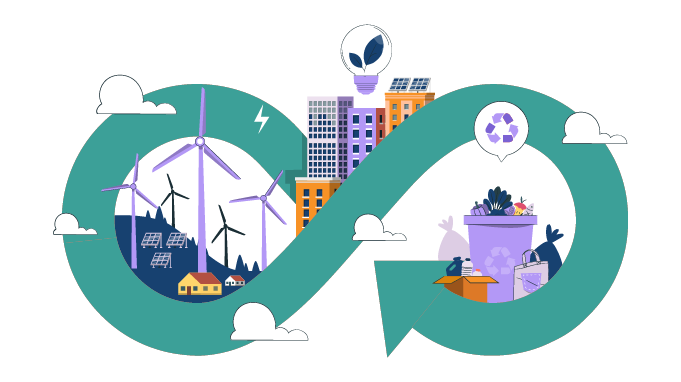
Sarah bikes to work daily, earning 25 points each time. She says it makes her think twice before printing unnecessary emails.
Simple system: 25 points for sustainable transport, 50 for recycling, 100 for energy-saving suggestions.
Why it works: Daily eco-choices feel meaningful and recognized.
Business impact: Lower utility bills, reduced waste costs, improved company reputation. Moreover, the overall carbon footprint reduces.
4. Points for Acts of Kindness and Peer Support
David stays late helping the new intern navigate client databases. His teammate nominates him for 75 points the next day.
System: Colleagues nominate each other for collaborative efforts. Points range from 25-100 based on impact level.
Why it works: Kindness gets noticed instead of taken for granted. Shifts workplace from competition to collaboration.
Business impact: Stronger teamwork naturally boosts productivity, without the need for forced initiatives.
5. Points for Customer Feedback and Service Excellence
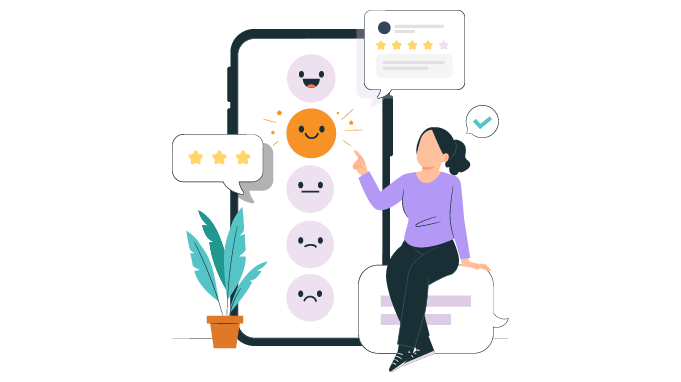
Tom in customer service sees challenging interactions as point-earning opportunities. Each complaint he converts earns recognition.
System rewards results: 100 points for 5-star reviews, 150 for testimonials, 200 for referrals.
Why it works: Difficult customer moments become worthwhile when exceptional effort gets recognized.
Business impact: Higher customer retention and referral rates through genuine service motivation.
7 Benefits of Points Based Rewards System
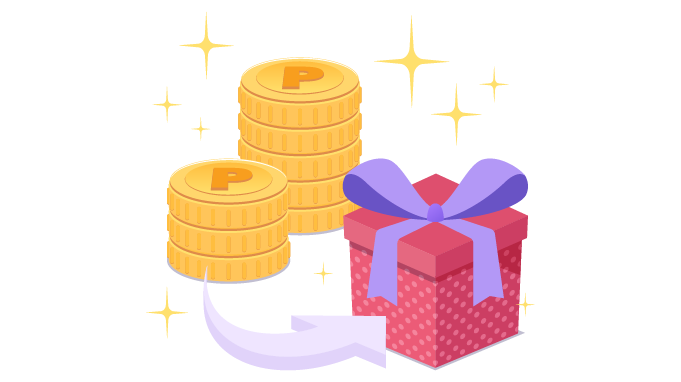
Let's dive into why points-based rewards are becoming every HR professional's secret weapon. These aren't just theoretical advantages - they're real, measurable benefits that can transform your workplace culture and bottom line.
1. Higher Engagement

Points tap into basic human psychology: achievement and progress. When employees see immediate recognition through points, they feel genuinely valued instead of wondering if anyone noticed their hard work.
The instant gratification creates a positive feedback loop. Instead of waiting months for annual reviews, employees get real-time acknowledgment. People want to go above and beyond because they know it won't go unnoticed.
The numbers: A fully engaged global workforce could boost the economy by $9.6 trillion in productivity, according to Gallup research.
2. Easy To Recognize Global Workforce
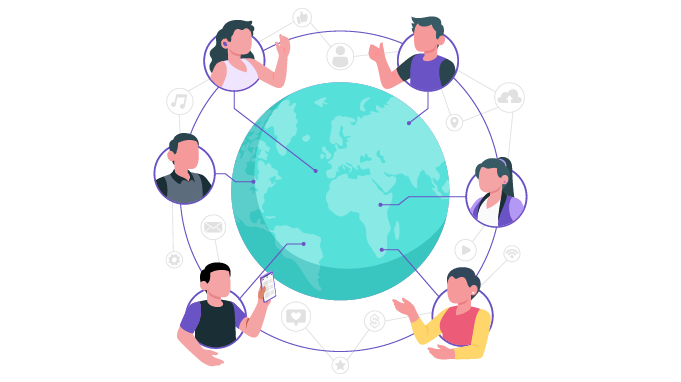
Managing recognition across time zones and cultures is challenging with traditional approaches. Points create a universal language of appreciation that works in New York, Bangalore, or São Paulo.
Digital recognition happens 24/7 without requiring physical manager presence. Tokyo team members can recognize London colleagues instantly, with everyone seeing transparent point values regardless of location.
Business impact: Eliminates cultural misunderstandings about meaningful recognition. Points speak everyone's language.
Recognize your global workforce with Vantage Recognition
If that is something you are still worried about then Vantage Recognition is your one-stop solution. The platform specializes in helping distributed teams engage through points-based recognition powered by the SOLI matrix. It works across borders, currencies, and cultural differences.
Not only that, it also enables employees to indulge in peer-to-peer recognition based on the organizational configuration. This helps promote employee empowerment and creates a culture of appreciation in the long run.
3. Flexible In Nature
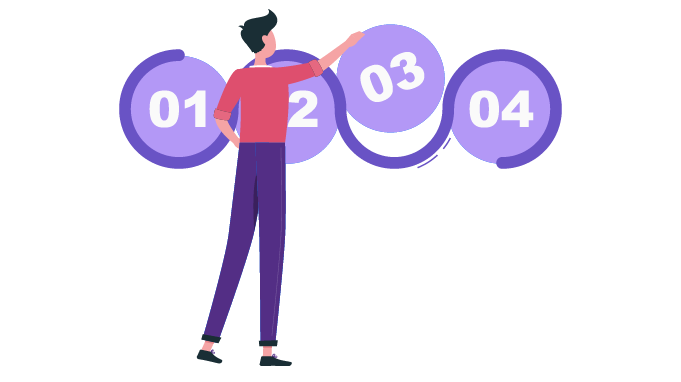
Points-based systems adapt to your changing business needs. Customize point values based on company priorities, adjust reward catalogs seasonally, create special campaigns for specific objectives.
Need to encourage innovation this quarter? Bump up points for creative suggestions. Want better customer service scores? Weight customer feedback points higher.
Strategic advantage: System evolves without complete overhauls when priorities shift.
4. Easy To Understand By Employees

Complex bonus structures confuse new hires. Points eliminate confusion entirely: do good work, earn points, redeem rewards. Even skeptical employees grasp it immediately.
No mysterious algorithms or subjective manager interpretation. Employees know exactly which behaviors earn recognition and point requirements for specific rewards.
Culture impact: Transparency builds trust and eliminates "teacher's pet" syndrome from traditional programs.
5. Enables Frequent Recognition

Traditional recognition happens quarterly at best. Points make recognition a daily habit rather than special occasion. Managers and peers give points when achievements are fresh and meaningful.
Frequency matters significantly. Recognition loses impact over time, so waiting weeks reduces motivational effect.
Immediate impact: Great client presentations get recognized the same day they happen.
6. Measure Impact And Track Metrics

Points-based systems generate data that traditional approaches can't provide. Track which behaviors get recognized most, department participation rates, and recognition correlation with performance metrics.
This data helps optimize programs over time. Customer service scores improve with positive feedback points? Double down. Marketing engagement dropping? Check recognition proportions.
Strategic insight: Finally, recognition programs you can actually measure and improve.
7. Points Add Value To Recognition

Points have actual, tangible value unlike empty "good job" recognition. When someone earns 500 points, they know it translates to meaningful rewards they can choose.
The accumulation aspect is powerful. Unlike forgotten one-off rewards, points build over time, creating anticipation and goal-setting behavior.
Manager impact: Employees with recognition-focused managers are 40% more engaged than those without, according to Harvard Business Review research.
Personal motivation: Employees think "I'm 200 points away from those wireless headphones"—recognition becomes personally motivating instead of just professionally acknowledged.
How to Create a Point System for Employees
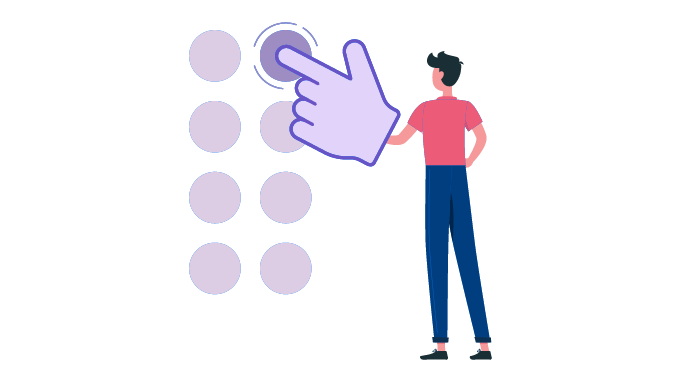
Ready to build your own points-based reward system? Let's walk through this step-by-step. I've seen too many companies jump in without proper planning and end up with programs that fizzle out after a few months. Don't be that company - let's do this right from the start.
1. Set A Clear Goal And Roadmap
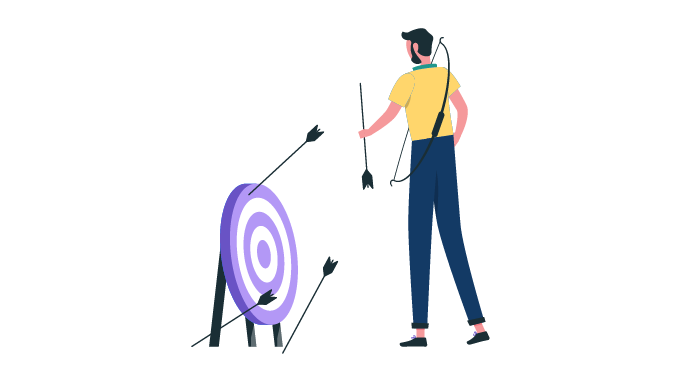
Start with objective alignment. Your point system must support actual company goals—boosting productivity, improving retention, or hitting specific business targets.
Define performance metrics precisely. Clear KPIs like sales numbers, customer service scores, or teamwork behaviors eliminate confusion about what earns points.
Timeline essentials:
-
Set realistic milestones for earning points
-
Establish clear redemption deadlines
-
Create measurable outcomes like "increase sales by 15% in Q1"
Communication strategy: Make sure everyone understands why the program exists and how it connects to company goals. When people see the bigger picture, participation increases naturally.
Ownership matters: Assign a dedicated champion to track success. Without ownership, even the best systems lose momentum over time.
2. Make Rewards Meaningful

Survey your team first. Don't assume everyone wants the same rewards—some prefer experiences, others want practical benefits.
Consider cultural sensitivity for global teams. What excites your New York office might completely miss the mark in Tokyo.
Tiered reward structure:
-
100 points: Coffee cards, small perks
-
500 points: Electronics, gift cards
-
1000 points: Vacation days, premium rewards
Personalization drives engagement: Some want gift cards, others prefer extra time off, many value team experiences.
Strategic alignment: Reserve your best rewards for achievements that really matter—leadership moments, exceptional teamwork, breakthrough innovations that move business forward.
3. Make The Program User Friendly

If your system needs a manual, you've lost half your audience. Keep it simple enough for anyone to understand in under five minutes.
Design like apps people love using. Think Amazon shopping experience, not tax software complexity.
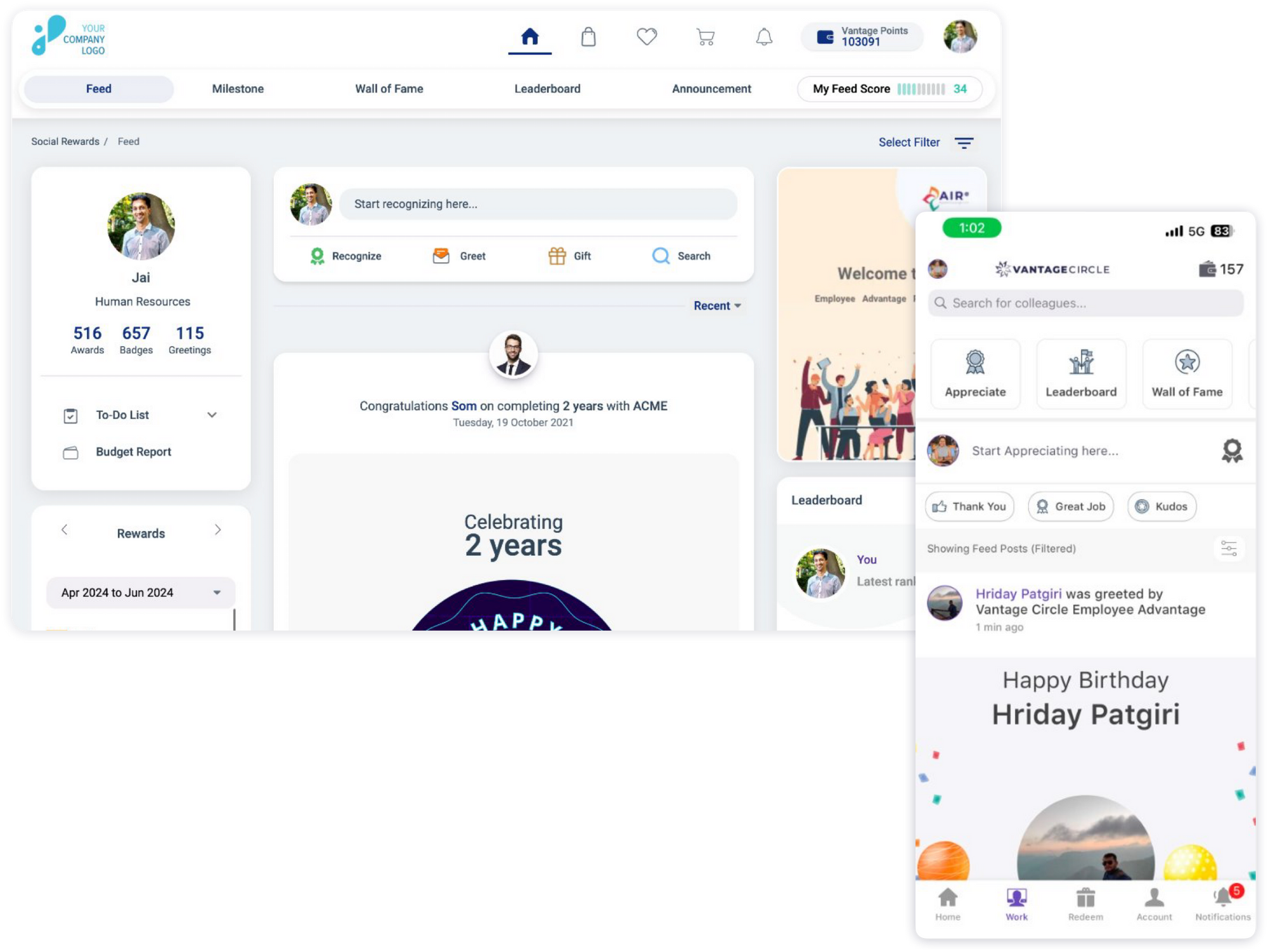
(Source: Vantage Recognition)
Essential features:
-
Automated tracking to eliminate manual logging
-
Mobile-first design for phone accessibility
-
Crystal-clear earning and redemption guidelines
-
Real support people when employees get stuck
User experience priority: Nothing kills enthusiasm faster than frustration with systems that don't work properly.
4. Keep Scope For Flexibility In The Structure
Give employees choice in earning and spending points. Flexibility makes people feel more invested in the program.
Build systems that adapt. Adjust point values, add new rewards, or shift focus based on changing business needs without starting over.
Flexibility options:
-
Multiple redemption paths (gift cards, experiences, charitable donations)
-
Event-specific campaigns during busy seasons
-
Scalable design for company growth
-
Regular employee feedback integration
Evolution strategy: The best programs adapt based on real user input, not management assumptions.
5. Use Digital Rewards And Recognition Tools
Invest in software that handles heavy lifting—tracking points, processing redemptions, managing reward catalogs without constant manual intervention.
Choose tools enabling instant recognition. The impact is stronger when appreciation comes immediately, not weeks later.
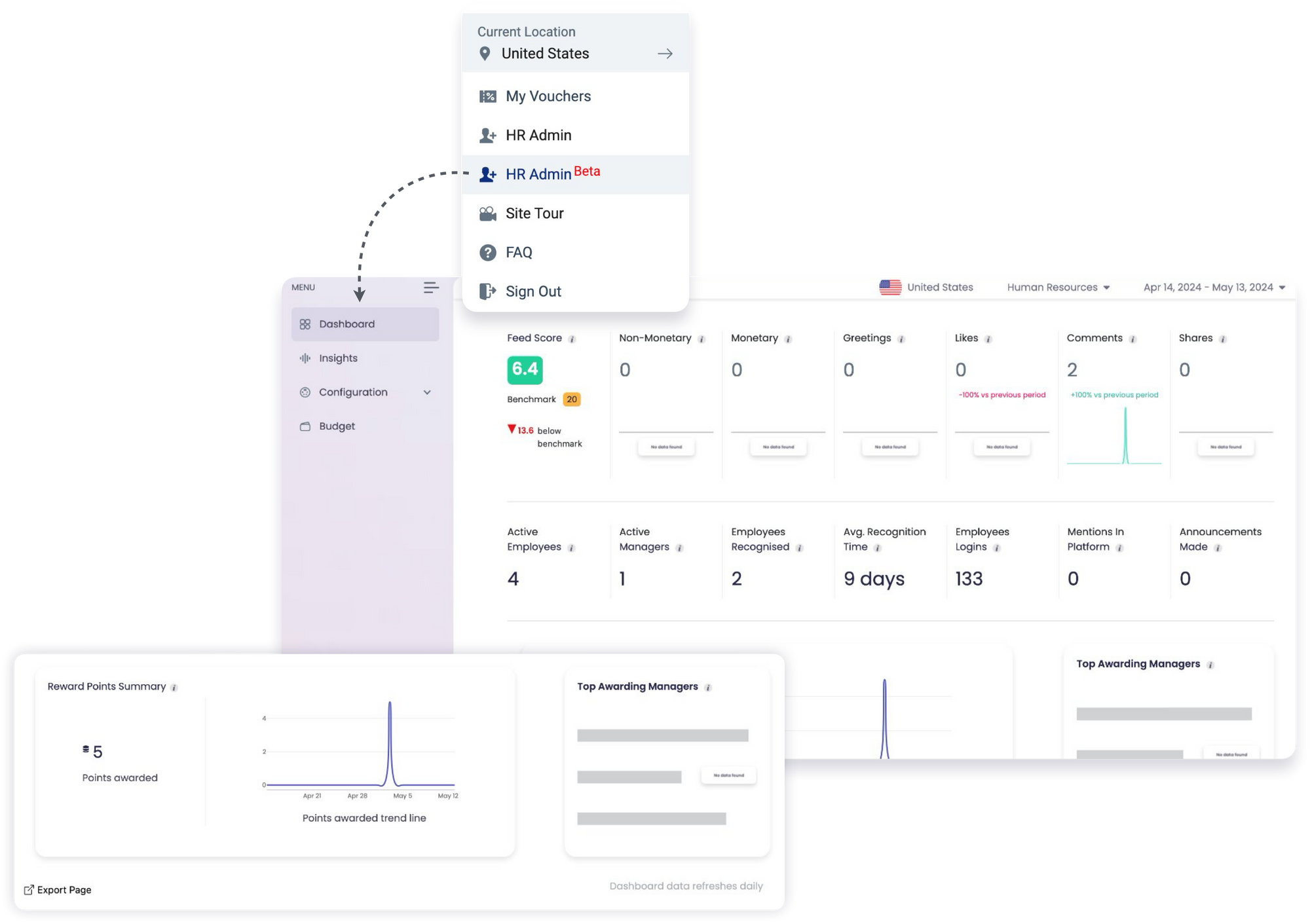
(Source: Vantage Recognition)
Platform requirements:
-
Mobile-friendly interface (essential)
-
Integration with existing HR tools
-
Real-time analytics and reporting
-
Minimal clicks for checking progress and redeeming rewards
Data insight: Get tools showing program performance—which rewards are popular, who's most engaged, how recognition correlates with business results.
6. Deciding the Conversion Of Points To Currency When Using A Point-Based Reward System
Set a clear, simple conversion employees easily understand. Many companies use 1 point = $1 but adjust based on budget and goals.
Global considerations:
-
Decide on worldwide consistency vs. local cost-of-living adjustments
-
Choose local currencies or standardized approach
-
Consider tiered conversion rates for higher point thresholds
Transparency builds trust: Be completely upfront about conversion mechanics. Hidden formulas or confusing calculations kill program trust faster than anything else.
Strategic advantage: Better conversion rates for higher thresholds reward big achievers while maintaining program accessibility.
Delivering Impactful Points Based Rewards With Vantage Recognition
Platform Spotlight: Vantage Recognition
Looking for a platform that gets points-based recognition right? Vantage Recognition combines social recognition, automated celebrations, and global reward flexibility into one seamless experience.
Core features that matter:
- Social recognition made simple: Custom awards and badges enable peer-to-peer recognition. Interactive social feeds and gamified leaderboards spark friendly competition while keeping everyone engaged.
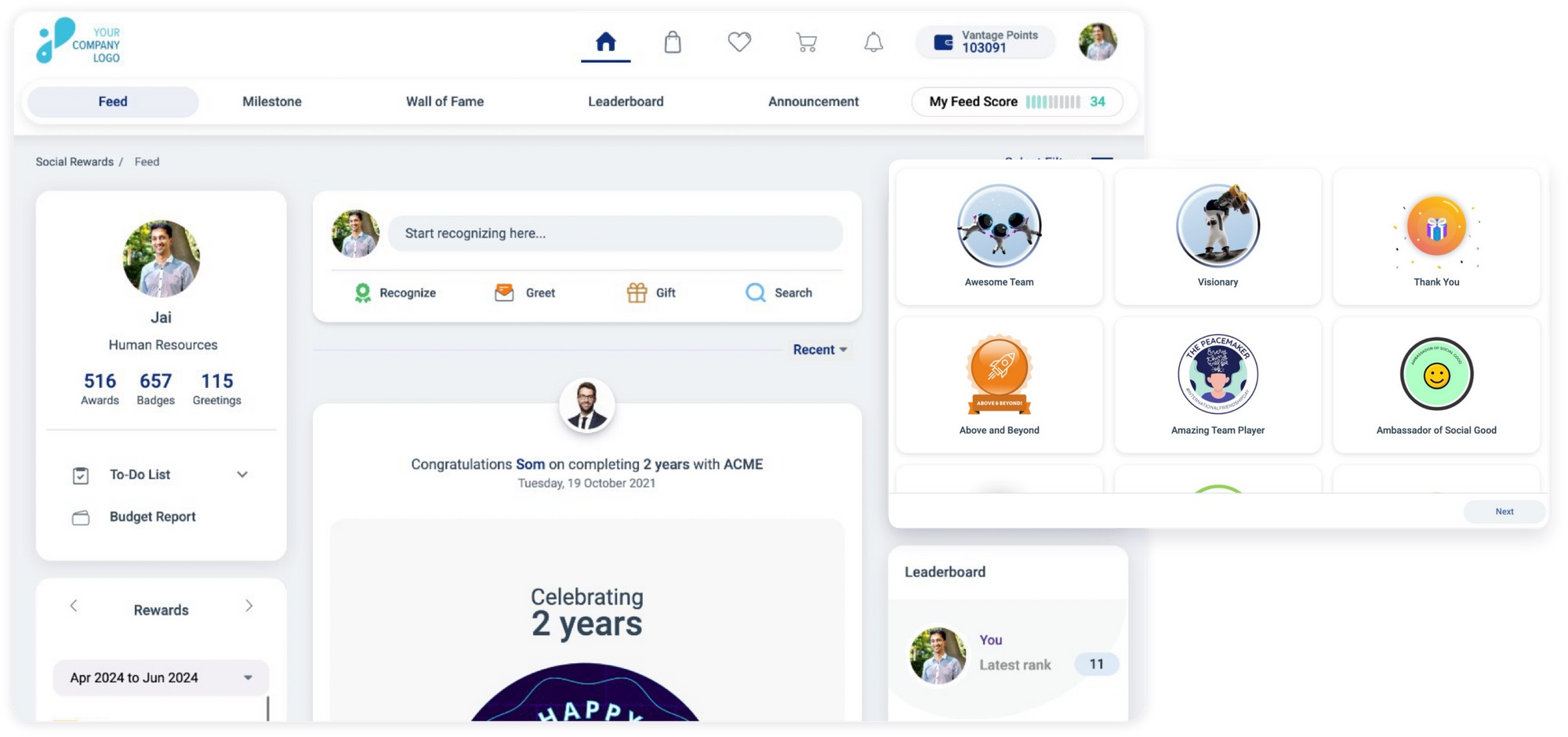
(Source: Vantage Recognition)
- Automated program management: The platform handles details that make or break recognition programs. Automatic birthday and service anniversary celebrations with personalized messages and point awards eliminate manual tracking.
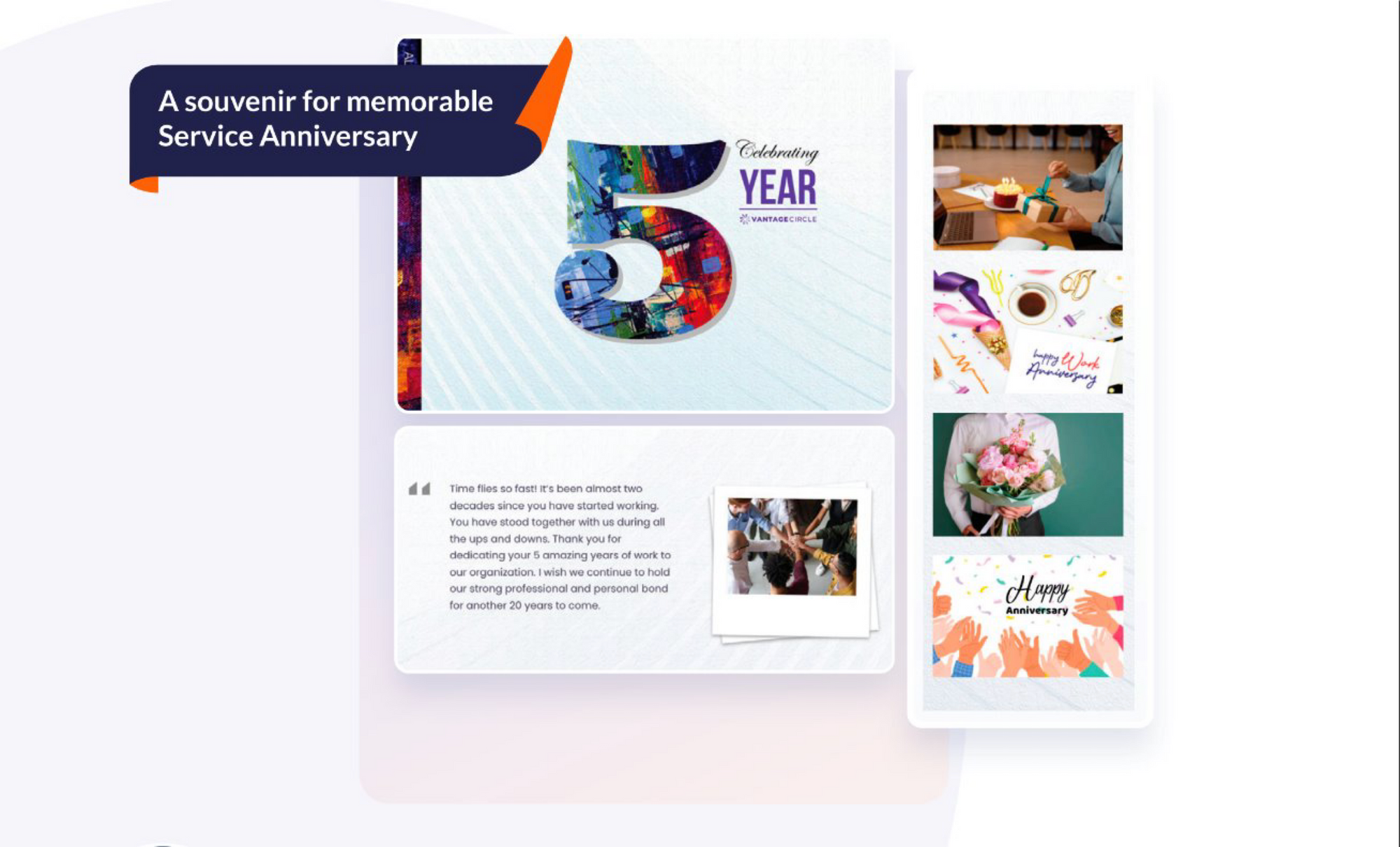
(Source: Vantage Recognition)
-
Global reward flexibility: Comprehensive reward catalogs span experiences to Amazon merchandise. Real-time analytics and budget management tools give HR teams the insights they actually need.
-
Workflow integration: Seamless connections with Microsoft Teams and major HRIS systems make recognition part of daily workflow instead of separate tasks to remember.
Why it works: Recognition technology that operates as efficiently as your team does. The platform handles complexity while keeping the user experience simple and engaging.
Strategic advantage: Combines the essential elements—social engagement, automation, global scalability, and practical integration—into a single solution that grows with your organization.
FAQ
Q1. How does reward points work?
Answer: Reward points function like digital currency for workplace achievements. Employees earn points for specific behaviors—hitting deadlines, helping teammates, completing training, or delivering excellent customer service.
These points accumulate in personal accounts and can be redeemed for rewards employees actually want. Think gift cards, extra PTO days, experiences, or merchandise from your company's reward catalog.
The simple cycle: Do good work → Earn points → Choose meaningful rewards. It transforms recognition from occasional manager feedback into immediate, tangible appreciation.
Q2. How do you reward employees with points?
Answer: Points can be awarded through multiple channels depending on your system setup.
Manager recognition: Supervisors award points for performance milestones, project completions, or exceptional work quality. Most platforms allow instant point allocation with personalized messages.
Peer-to-peer recognition: Colleagues nominate each other for collaborative efforts, helpful behavior, or going above and beyond. This creates a culture where appreciation flows from all directions.
Automated triggers: Systems can automatically award points for completing training modules, hitting sales targets, or receiving positive customer feedback.
Event-based recognition: Special campaigns during busy seasons or company milestones keep programs fresh and aligned with business priorities.
Q3. How does the point system work?
Answer: Point systems operate on transparent, predefined rules that eliminate guesswork about earning and redemption.
Earning structure: Different achievements carry different point values. Training completion might earn 50 points, project milestones 200 points, exceptional performance 500 points. Values scale with effort and business impact.
Redemption process: Employees access their points balance through digital platforms, browse reward catalogs, and redeem points for chosen items. Most systems process redemptions automatically without HR intervention.
Tracking and transparency: Real-time dashboards show current balances, earning history, and available rewards. Employees always know where they stand and what they're working toward.
Program flexibility: Point values and reward options can be adjusted based on changing business needs, seasonal campaigns, or employee feedback.


















